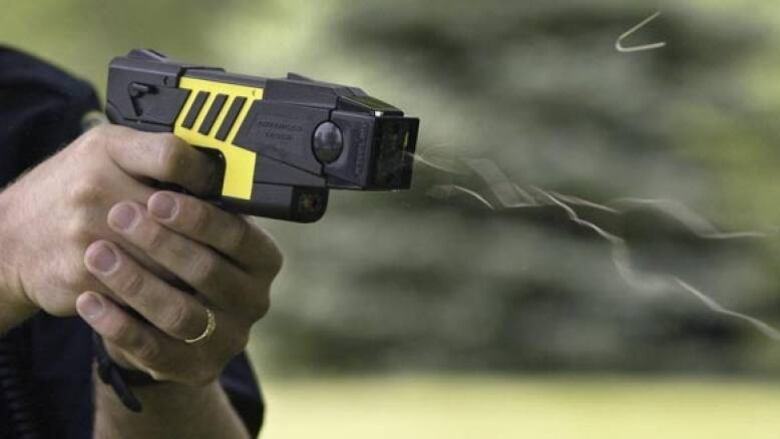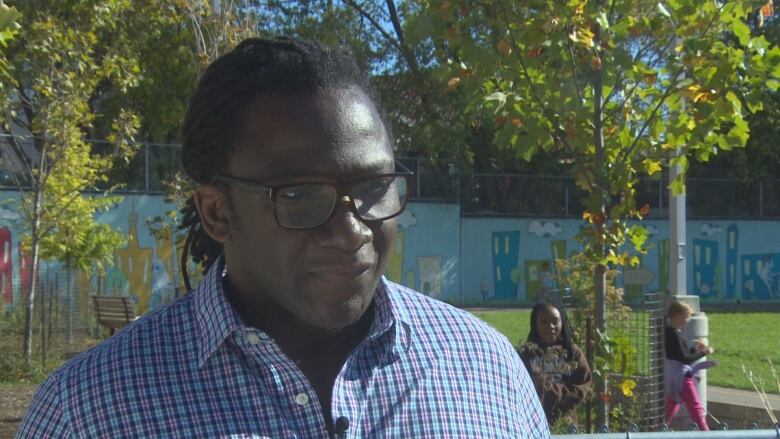Report spotlights how frontline Toronto police are using new Tasers
Some 774 frontline Toronto police officers are now equipped with conducted energy weapons

It's been more than seven months since hundreds of frontline Toronto police constables were issued conducted energy weapons, and now a picture is emerging of how that decision has played out on city streets.
An eight-page report presented to the Toronto Police Services Board on Thursday outlines 78 interactions involving the weaponsbetween officers and the public over a three-month period earlier this year.
In nearly 77 per cent of those incidents, officers used their Taser as a "demonstrated force presence." In other words, they were able to subdue someone by simply displaying their Taser withoutfiring it.
Some 16.7 per cent of interactions included the officer actually firing the Taser, though in two of those instances it was done unintentionally. In one notable example, a constable Tasered someone who was operating a motor vehicle and had "accelerated the vehicle toward [the] officer."
- Up to 400 more frontline officers in Toronto to receive tasers
- Toronto police board swears in its first-ever mental health expert
The report notes that as more and more frontline constables are givenTasers, there will likely be a sharp increase in the number of incidents in which officers default to using them over"empty-hand techniques to resolve a potentially volatile situation."
The report also parsed interactions between police and the public that included sergeants. However, the primary focus of discussion is on Taser use among frontline constables, as over time they will represent the majority of officers outfitted with the weapons.
Some higher ranks, such as supervisors,have been equipped with conducted energy weapons since 2002.
As of August of this year, there were 361 constables and 413 sergeants trained and qualified to use conducted energy weapons.
Asked outside Thursday's meeting whether widespread use of the weapons suggests frontline officers are behaving more violently, Meaghan Gray, spokesperson for Toronto police, said "certainly not.
"I think those numbers would certainly represent an increase in the number of officers who actually have access to a [Taser]," she said.
Gray added that the jump is also "a reflection of the training, which is thateven just the display of a conducted energy weapon can often be the safest way to rectify a very volatile situation."
'More deadly weapons in the hands of police'
The increased adoption of conducted energy weapons among frontline officers has some community advocates concerned about its potential impact onpolicing.
"This is just putting more deadly weapons in the hands of police,"saidNigelBarriffe, chair of the Urban Alliance on Race Relations, adding that he believes money spent on Tasers about $1 million to datecould be better used elsewhere.
"What we believe the funds should be used for is helping to de-escalate folks, especially when we know that many of these confrontations are made up of people who have mental health issues."

Although theboardhas a mental health sub-committee, it did not have a chance to provide input on the current findings. The sub-committee and the board's anti-racism advisory panel are expected to provide commentary for the next quarterly report on how conducted energy weapons are being used by Toronto police.
When expanding the use of the deviceswas first proposed at last October's meeting, Barriffe was one of a few people who argued against them, sayingother frontline workers like teachers, nurses and social workers quell tense situations without weapons.
"Instead of going to de-escalation techniques, it seems to be easier for [police] to think, 'I'm going to take this weapon out and fire it at this person instead of trying to talk to them,"' said Bariffe.
Toronto first started using conducted energy weapons in 2002. Last year, Chief Mark Saunders successfully argued that by giving more police officers Tasers, they would have a less-lethal tool to protect the public and themselves.
Corrections
- A previous version of this story incorrectly stated that the use of conducted energy weapons among Toronto police was up 77 per cent.Oct 26, 2018 11:31 AM ET












_(720p).jpg)


 OFFICIAL HD MUSIC VIDEO.jpg)
.jpg)



























































































